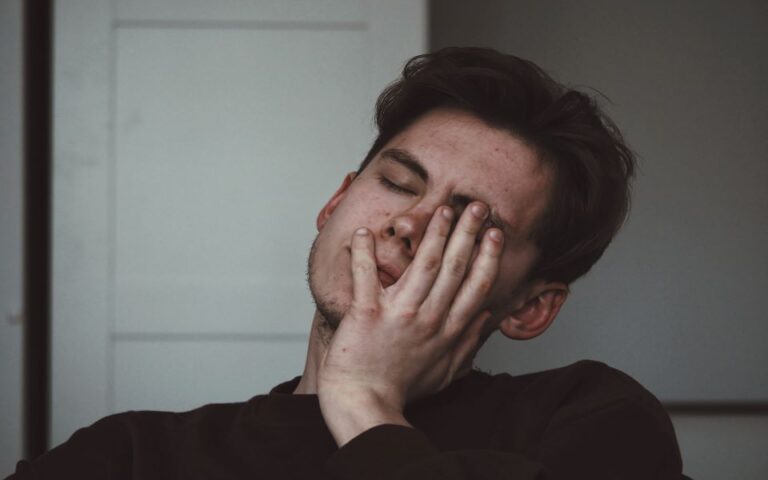
We talked about sadness, sorrow, grief, mourning and melancholia. How can we be with sadness and use it to help us to connect with ourselves and others, and mobilize us towards justice? And how can we avoid shutting down on sadness, or giving up in the face of overwhelming grief?
We recorded this podcast on Friday 29th May, after the death of George Floyd but before the wave of protests which followed. Much of what we cover in the podcast remains relevant – and will continue to be relevant whatever the world situation – but we wanted to state this up front so you can be aware of why we don’t go into detail about the role of grief in this current uprising during the episode. Our focus here was more on the Covid-19 situation, although we also touch on #BlackLivesMatter. There’s a list of resources which we’ve found helpful over the last week or two at the end of this post.
https://soundcloud.com/culturesexrelationships/sadness
Or click here to listen at SoundCloudAfter a check-in about the situations which we – ourselves – are currently feeling sadness about, we covered what sadness – and related feelings – are, how to stay with them, how to connect with others through them, and how they can bring us towards justice.
What are sadness, sorrow, grief, etc.?
We’re talking here about sadness as a feeling we often get around loss or other kinds of suffering. It often feels tender, vulnerable, and soft, perhaps also low, heavy, and raw. Grief, grieving or mourning are ways we express sadness – alone or with others.
Depression and/or melancholia could be seen as when sadness becomes stuck, or takes us to a place where we need to give up or retreat from the world for some time. It can feel more heavy, fatigued, hopeless, and foggy than sadness. In medieval times there was a belief that mourning is brought on by a specific incidence of loss while melancholia was seen as an illness and to be “melancholic” was a temperament where you were more prone to melancholy.
Don’t miss out on episodes and blogs! Every other podcast is for Patrons only. Sign up to our Patreon from just $1 per month.Mourning a sad event and feeling sad, sorrowful and tearful is important, otherwise we may become stuck in melancholia. Melancholia was seen by Freud as “A loss of a more ideal kind [than mourning]. The object has not perhaps actually died, but has been lost as an object of love.” (S. Freud). Or, as George Michael put it following a great loss: “And every single memory / has become a part of me / you will always be / my love”. Perhaps we go into melancholia or depression when it’s about losing things we’ve project onto others: the hope of a saviour or perfect One, the kinds of care and protection we lost young and now yearn for.
Winnicott’s ‘Value of Depression’ speaks about the ability to feel sadness as part of maturation. Sadness can help us to differentiate between our inside and outside, as we learn to feel sad about external situations and separation from others. Sadness is likened to a fog descending over a city and then lifting. Where sadness is allowed to work it’s way through without hindrance we can come out stronger as a result.
Trauma theorists talk of sobbing, sorrow and grief as important ways of releasing trauma. If we are discouraged from releasing it in this way when we are young it may become locked in the body, and we may need to return to grieve as an adult in order to release it in various ways.
Shame theorists suggest that having our emotions ‘regulated’ by those around us – who reassure us that it legitimate to feel them, and hold us through them in various ways – is vital. If we are not regulated in that way we may well feel shame about our feelings – and ourselves – and need to do that work of regulation when we’re older – through therapeutic support, with ourselves, and with our supportive people.
Staying with sadness
The feeling of sadness – like all feelings – is valid and vital. If we try to avoid feeling sadness – or attempt to eradicate our capacity for sadness – then we’ll damage ourselves and our capacity to feel other emotions as well. This is well depicted in the film
Inside Out. When we can feel all emotions then we’re able to flow through them more easily. When we only allow some we can become stuck in certain states, or cut off entirely. There’s more on how to stay with feelings in MJ’s
zine on the topic, and our podcast
here.
The risk of avoiding or eradicating sadness is that we may not feel the grief necessary to process loss or trauma, so it becomes locked within us, making it hard to be present, or to look to the future. We may feel haunted by the sad times of our life and struggle to move forward. As in Inside Out, being unable to access sadness also means other feelings will become less available to us, and vital parts of our psyche may become cut off.
Grief is good: Sadness, connection, and compassion
Sadness is highly related to vulnerability and our capacity to connect with ourselves and others – and to feel compassion for them. Being able to express vulnerability, and be with others in their vulnerability, is a key component to intimate relationships, and showing when we’re sad is a key component of vulnerability.
Sadness and grief are often feelings we may finally get to when we manage to get underneath the emotions which are more related to reactivity, such as anger, fear, and shame. Generally we cover over our sadness and vulnerability by lashing out or controlling (fight), distracting (freeze), escaping (flight), and trying to appease others (fawn). When we can realise those strategies, and manage to refrain from falling into them unconsciously, we may end up feeling the sadness, vulnerability, and loss which resulted in us needing to employ those strategies in the first place.
When we can feel sad – and are helped to feel it – we often find it easier to feel compassion for ourselves and for others. It can crack us open to connect with others in this way. It’s useful to notice what blocks us from feeling sad – for example feeling overwhelmed by distress (of ourselves and/or others), or not wanting to recognise how we’re implicated in such distress.
Buddhist practices encourage feeling that ‘broken-heart’ feeling in the places where it comes easily, and then expanding out to people and situations where it is more challenging, both to notice where we become blocked, and to practice feeling sadness and compassion for all of us. It’s important to be gentle with ourselves, as it’s hard to undo patterns of not allowing sadness, and open to it. It’s also important to challenge ideas about what are, and are not, legitimate reasons to feel sad or legitimate ways of expressing sadness.
Sadness as a resource for fighting injustice
We spoke on our previous podcast about how anger could help motivate us to fight injustice, but what about sadness? Here we reached the conclusion that both are vital. Anger helps us to create the boundaries in which it is safe enough to feel vulnerable and to express sadness.
Anger and sadness together give us the combination of protection and connection so that we can be motivated to protect ourselves and others, while also connecting to the ways in which we’re all caught up in systems of oppression, intergenerational trauma, and attempts to avoid painful feelings. Sadness without the protection of anger can become overwhelming and inward focused. But anger without the connection of sadness can mean we act in reactive ways before releasing our feelings, and fail to connect with our own capacity to be both victims/survivors and perpetrators/oppressors – to feel the deep grief of that and to connect with others in ways that might result in change.
Sadness also gives us valuable information about the material conditions that are making us and others sad. It can be useful if sadness gives us the opportunity to be slow and introspective rather than reacting quickly: to consider what is making us sad but also being accurate about that information.
The difference between sadness and melancholia is also relevant here. Are we melancholic for a different kind of politics in the past that we can’t recreate, and is this stopping us from imagining a future? This would be a kind of
left melancholia. The potentially destructive and conservative nature of holding on to and loving past ideologies rather than being here-and-now is
neoliberal melancholia. This is why it is so important to mourn and to allow each other to mourn collectively and personally.
Intersectionality and sadness
Who gets to feel and express sadness? This is impacted by the messages we receive in wider culture, our place on the intersectional axes of oppression/privilege, our family/community norms, and intergenerational trauma and our responses to it – what felt safe, or even possible, for us to experience and express growing up.
As Iesha Small points out in her blog post on
exposure to racism as trauma: ‘For a Black person in a predominantly white country the effects of racism are probably best compared to a form of PTSD. Which is why the Angry Black Person narrative is so reductive. Anger is some people’s response to trauma. Maybe they want to cry but vulnerability requires trust. And how are you going to trust if you don’t feel safe? Or if the things you know are very real aren’t even acknowledged as happening? The closest parallel here may be domestic violence or domestic abuse… Maybe it’s anger (which is entirely valid in the face of repeated dehumanisation) maybe it’s a safer way of expressing despair, fear, sadness, shame, disappointment or overwhelm.’
The concept of white woman tears highlights how sadness can be performative, distracting us away from other legitimate feelings that may be present, for example when a black person raises the presence of racism, and the focus becomes on the pain of the shire person being seen as racist, rather than pain of the person of colour being treated in a racist way.
The answer is not to avoid feeling sadness, but rather to allow ourselves to feel the sadness of having hurt another, leading us to a desire to be accountable and do better, rather than falling into defences of blame or shame which distances us from others. This can be easier said than done of course when experiences tap into old shame about not being good enough.
Ring theory is a helpful concept whereby it is appropriate to go to those who are less impacted by whatever-has-happened than us for support, but not to expect support from those who are more impacted. For example, white people might go to other white people to grieve the impact of white privilege, or times they have acted in racist ways, rather than to people of colour.
Sadness is also highly gendered. Men crying is so rarely seen and it only ever seems to be okay in extremely limited circumstances coded by what it is that is okay to upset men such as sports or losses related to fatherhood. Justin has written more about the risks to everyone of men being socialised only to express anger – and not sadness –
here.
Takeaways
The question is how can we stay with our fragility, vulnerability and sadness and connect with others’ pain and suffering – however this is expressed – through this, rather than shutting down on ourselves or focusing on our sadness and pain in ways that exclude others or disconnect us from them. We would suggest.Practice encouraging sad feelings when they arise and
staying with themTalk with close people about how you might share sad feelings with each other, and what your needs are when sad (e.g. solitude and/or support).
Consider therapy – or other – support to learn how to grieve and to grieve the past so it doesn’t overwhelm the present.
Consider sharing circles or similar formats where each person has chance to share and express their sadness.
Explore what safe-enough spaces would be – for you – to experience and express your sadness around what’s going on in the world. Who are the safe-enough people to go to for support? How might you nurture possibilities for more collective grief and mutual mourning?
Useful resources around Black Lives MatterJustin has a list of resources for learning about racism
here.
We found
this podcast very useful for the history and context of the BLM movement.
There are a couple of podcasts featuring Keeanga-Yamahtta Taylor which are really interesting about identity politics, intersectionality, solidarity, and BLM.
This one and t
his one. Her book
From Black Lives Matter to Black Liberation is excellent.
Reni Eddo-Lodge’s work is helpful for the British context, as is
The Good Immigrant.
Layla Saad’d
Me and White Supremacy is a great workbook for thinking through whiteness and how to be anti-racist.
Gary Younge’s
article in the New Statesman is helpful in drawing together police violence and the disproportionate number of black people and people of colour dying of Covid-19.
© Meg-John Barker and Justin Hancock, 2020
SOURCE:






 Participants saw either branded packing, plain white packaging, or plain green packaging. From Taylor et al (2023)
Participants saw either branded packing, plain white packaging, or plain green packaging. From Taylor et al (2023)


